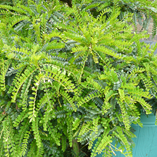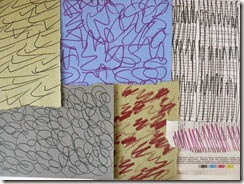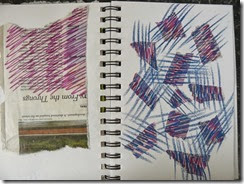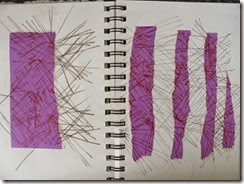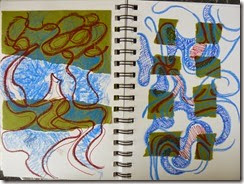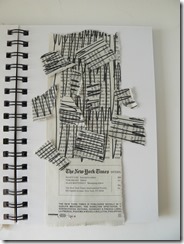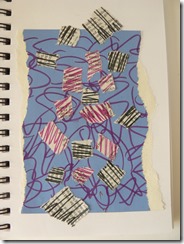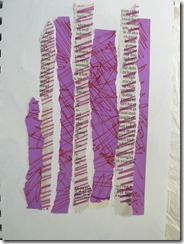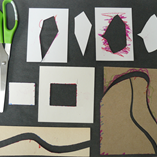Discover textures you can re-create using your scribbled drawing techniques. I’ve taken a walk around the garden and can see a wide range of different scribbles – sorry – textures. You might find a walk around a park, a vegetable or flower market or a walk along a country road or even a house plant or vase of flowers will give you similar inspiration.
- Look at just one texture at a time to scribble. Maybe add a neighbouring texture, as in the edge of lawn with an over-hanging shrub or a tree trunk with surrounding ferns. (A whole garden or landscape is ambitious at this stage!)
- Use different types of drawing pens/pencils/crayons but suggest you don’t try to juggle with different colours yet.
- Look carefully at your texture patch and scribble way with marks that seem to be closest to your observed texture.
- Perhaps a light scribble will give you a ‘skeleton’ of your observed texture which you can then build on. See the first three images of the shrub, the first stage of scribble and the final scribbled texture.
- Use different markers to make combinations of soft, fine, heavy types of marks.
- Make vigorous, energetic scribbles, sometimes turning the sketchbook page around so you can get a better ‘swing’ with your marker.
- Notice where the textures might need a heavier, darker scribble – change your marker for a darker one or press more heavily.
Enjoy your scribbling with a purpose this time!
Look out for lesson 5 next Monday, 2nd June.
